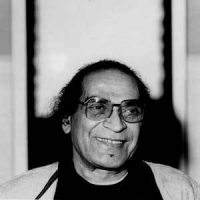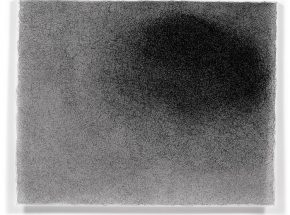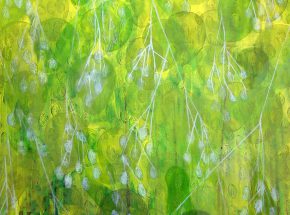

Sohan Qadri can be described as a Tantric painter – a modern Tantric painter to be sure. Born in Punjab, India, Qadri began his quest for his true self through Tantric yoga and spent long periods of time silently meditating in remote temples in the Himalayas and Tibet. His isolation propelled his urge to paint. He received his MFA in 1960 from the Government College of Art in Simla, India, but soon discovered that academic trappings were not for him. Shortly after his first exhibition in 1965, he left India for the West. In Qadri’s work, there is a tranquil coexistence of binary opposites – male and female, known and unknown, physical and spiritual. Although he clearly has Western influences, such as Mark Rothko and Clyfford Still, his work is uniquely Eastern. Heinrich Boll, the 1972 Nobel Prize winner in Literature, has said that Qadri, “with his painting liberates the word meditation from its fashionable taste and brings it back to its proper origin uninfluenced by Western propaganda, misunderstandings and corruptions.” His paintings are monochrome surfaces with structural effects that, in their repetition, convey the rhythmic expressions of color energies. The vibrations created by these energies are endless and break the boundaries between the inner space of the image and the external space of the viewer. In their pulsations, the colors allow for a meditation in which those who experience space seek to become space itself. As Qadri has said, “The narrowness of space has posed as a great problem to me. Phenomenal life can hardly be lived within a few known dimensions.” Qadri’s work has to be experienced; the viewer must surrender to the work. In front of his work, the viewer is confronted with the silence within himself. The work does not direct; one must direct oneself. This intuitive experience speaks all languages and knows no formal boundaries. Suneet Chopra summed it up by saying, “With its dispersion of and concentration of energy, it far excels expressionist abstractions whose aggression is their main force of attraction.”
Qadri’s works are included in official and private international collections. He has had more than 40 one-man shows in his various hometowns in addition to major gallery exhibitions in Bombay, Vienna, Brussels, London, Oslo, Stockholm, Montreal, Toronto and Los Angeles.
www.sundaramtagore.com


